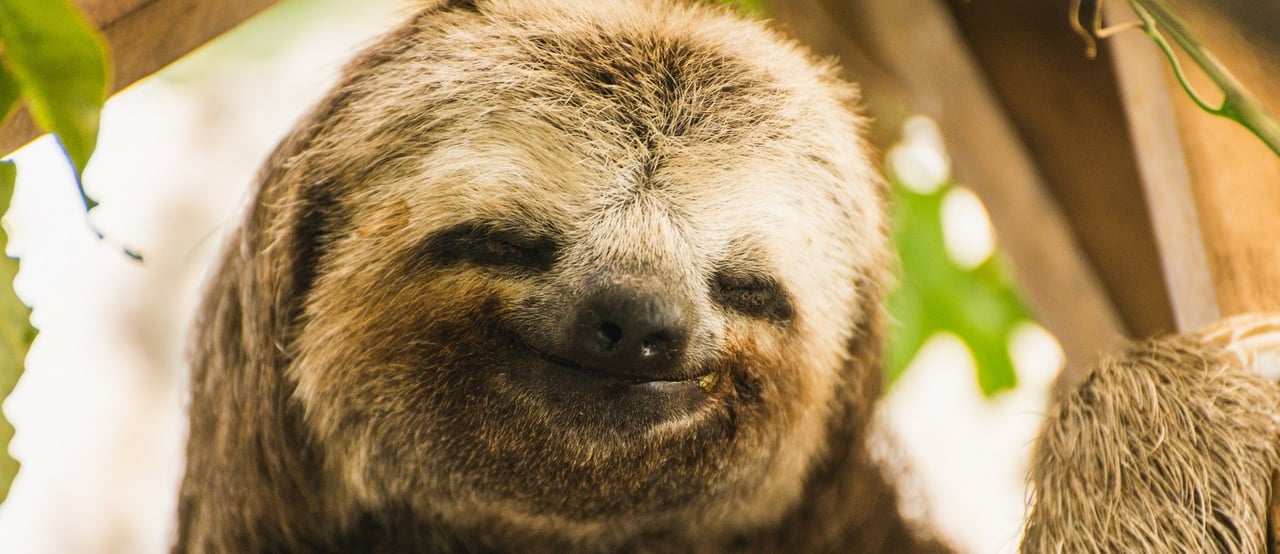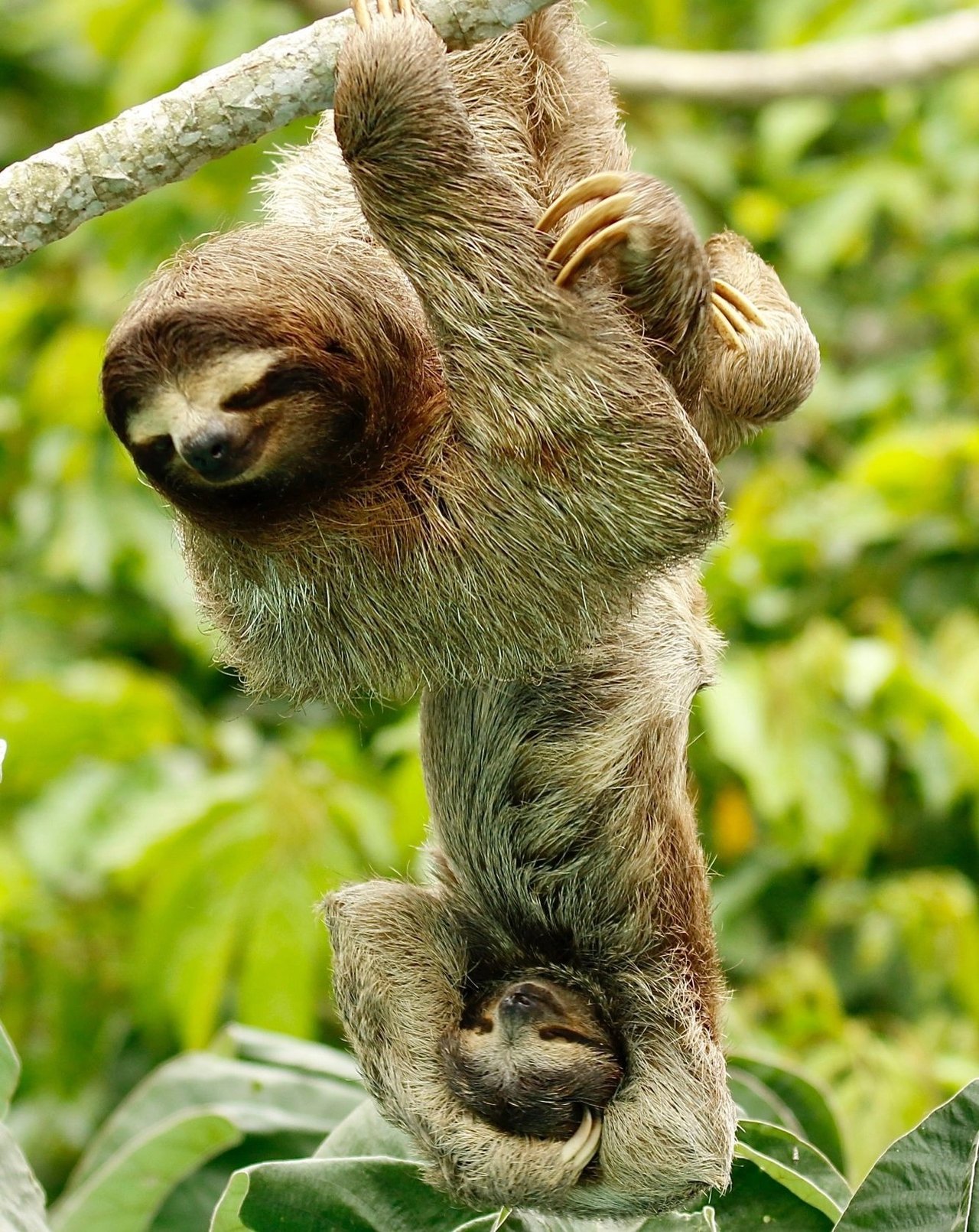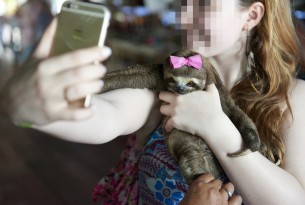Sign up to the Wildlife Selfie Code
Sign our Wildlife Selfie Code now, and help filter cruelty out of selfies.

There are two types of sloth, two-toed and three-toed. However, this can get confusing as both types have three claws, or ‘toes’, on their hind limbs.
Today’s quiet and docile sloth is about the size of a medium dog. They haven’t always been this size though! They are descendants of the Megatherium, a giant ancient extinct sloth that could grow to the size of a modern-day Asian elephant.
For people, hanging upside down for too long can become more than a bit uncomfortable. So how do sloths do it for 90% of their life? With their organs attached to their ribcage, it greatly reduces pressure on their lungs while hanging out.
The majority of a sloth’s diet is pretty green, consisting of mainly buds, leaves and tender shoots. They have a multi-compartment stomach, allowing them to effectively digest all the tough cellulose they eat. This is by no means a fast process, taking 30 days to digest just one leaf! They need a great deal of rest due to their incredibly slow metabolism.
Their slow nature is an energy conservation tool. They move slower than any other mammal on the planet. In one day, they will only move 38 metres on average. Sloths are even slower when on the ground, cruising at a leisurely 30cm per minute.


Sloths are losing their habitat fast. Day by day more of the tropical rain forests they call home are lost due to illegal logging for industrial farming and deforestation. This loss of habitat leaves them on the forest floor where they are defenceless against predators. Humans are included on this danger list. When found by illegal loggers they are often stolen from their homes and sold to illegal pet trades or tourist entertainment trades.
When sold to a tourist trade, sloths become a prop for people’s tropical adventure selfies. The wildlife selfie business is dangerous because sloths are just as delicate as the ecosystem they live in. Usually, they spend 56% of their day sleeping. When forced into the selfie trade, they are passed from person to person and only able to sleep or rest for 2% of the time.
The amount of handling these stolen sloths receive is anxiety and fear inducing. The stress they endure in these environments is both physical and psychological. They are handled incorrectly, unable to sleep, unable to regulate temperature and constantly hyperaware of their surroundings. It’s estimated that sloths taken from the wild and forced to work in these unnatural conditions may not survive longer than 6 months.
The facial structure of a sloth gives the appearance that it is constantly smiling – even if it is experiencing pain, stress, or anxiety. When sloths are used as a photo prop for wildlife selfies, tourists may accidentally confuse this feature for happiness or contentment.

In 2017, 250,000 people signed our Wildlife Selfie Code, a campaign encouraging people not to be part of the ugly picture that is wildlife selfies. This campaign pushed Instagram to educate its users on the suffering these images cause, and it now has its own content advisory page dedicated to informing users about on the animal welfare issues that surround wildlife selfies.
In 2019 World Animal Protection joined forces with the Costa Rican Government’s Ministry of Energy and Environment to deliver a world first. The first ever government #StopAnimalSelfies campaign.
This wasn't just a hashtag, it was an education campaign that included:
Sign our Wildlife Selfie Code now, and help filter cruelty out of selfies.
Thousands of animals are being torn from the wild just so tourists can take selfies with them for social media.
Read our 'A close up on Cruelty' report and learn about the harmful impact of wildlife selfies in the Amazon.

Join thousands of animal lovers fighting to protect wildlife and give farmed animals good lives. Sign up now to receive emails with all the ways you can help.
Sign up